Utah Construction & Design has come out with their 2016 Outstanding Project Awards, and Meridian was recognized—twice.
Congratulations to Nichole Luthi and her team for these achievements!
Utah Construction & Design has come out with their 2016 Outstanding Project Awards, and Meridian was recognized—twice.
Congratulations to Nichole Luthi and her team for these achievements!
Thank you to everyone who helped us win the LiDAR as Art contest! Thanks especially to the team who captured the scan: Jeff Searle, Marshall Burt, and Brian Boehmer! The news of our victory can be found here.
The team at LiDAR News asked us to write an article about the experience, and we gladly did. The article, “LiDAR to Perpetuate Beauty,” can be found here.
Thanks again! We are so excited that we won!
When it comes to services rendered, Meridian is unmatched. When it comes to winning contests, Meridian is also unmatched. What can we say? We really enjoy winning.
Meridian entered LiDAR News’ annual “LiDAR as Art” contest. This year’s theme is Winter Solstice, and LiDAR manager Jeff Searle knew just what to scan: The Sun Tunnels.
Designed by artist Nancy Holt, the Sun Tunnels are a set of four massive concrete tubes. On the Summer and Winter Solstices, two tunnels line up to frame the sunrise and the other two tunnels line up to frame the sunset. We are a couple weeks early for the Winter Solstice, but we got some great images anyway.
Jeff, Tiana Moe, Marshall Burt, and Brian Boehmer spent hours scanning the Sun Tunnels from every angle to ensure we’d get the best image possible. After a bit of rendering and a touch of color, our entry was submitted.
Today we found out that we are finalists in the LiDAR as Art contest! Now we need your help to snag the win. Or completely dominate the contest—we aren’t picky.
Go to the link below and vote for Sun Tunnels. This is an international contest with some good contenders, and we need to show the world that our little corner of the world has unparalleled beauty.
http://lidarnews.com/articles/lidar-art-contest-finalists/
Below are some pictures of the Sun Tunnels, including our submitted image.
Stay tuned for a full account of our adventure that will be published on LiDAR News’ website!
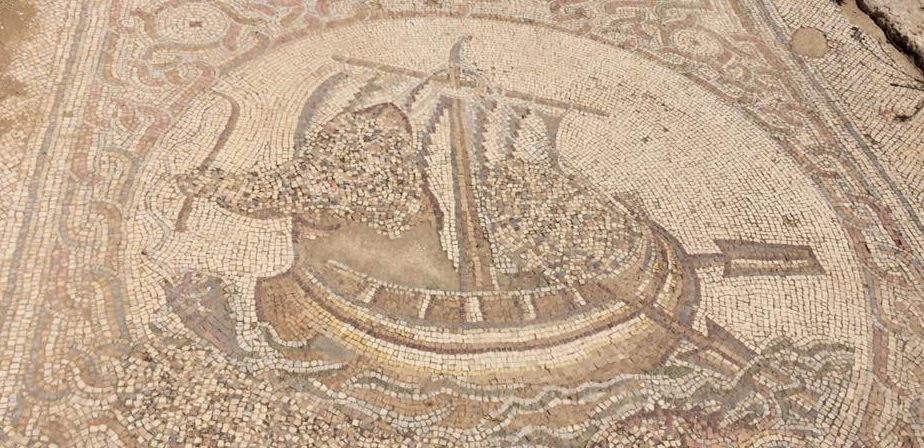
Meridian’s own Mike Nadeau took the trip of a lifetime to Israel, where he surveyed on an archaeological site called Beit Lehi. He and his peers used new technology to study ancient caverns, and in the process they stumbled across some new archaeological finds that are thousands of years old.
Mike was responsible for flying the drone used to take aerial images and videos of the Beit Lehi site. And while the drone’s batteries recharged, he helped perform LiDAR scanning (a form of radar that uses light rather than radio waves). After interviewing Mike and hearing about his experiences, his stories are best left in his own words.
Ancient Graffiti
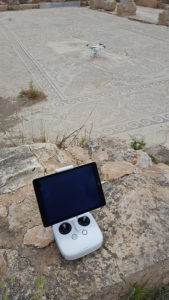 I was flying the drone from a Byzantine church on the site, dating to around 300AD. The symbolic cross of today wasn’t a symbol of Christ during the time of Christ—this came into effect around the Byzantine era, too. Something interesting that we found was a bunch of crosses and other religious symbols scratched into the rock walls everywhere. The lead archaeologist, Oren Gutfeld, PhD, told us that this was fourth-century graffiti. People would come down to the tombs or to the church and carve religious symbols into the walls. It was really interesting to know what I considered to be neat old religious carvings is considered to be graffiti.
I was flying the drone from a Byzantine church on the site, dating to around 300AD. The symbolic cross of today wasn’t a symbol of Christ during the time of Christ—this came into effect around the Byzantine era, too. Something interesting that we found was a bunch of crosses and other religious symbols scratched into the rock walls everywhere. The lead archaeologist, Oren Gutfeld, PhD, told us that this was fourth-century graffiti. People would come down to the tombs or to the church and carve religious symbols into the walls. It was really interesting to know what I considered to be neat old religious carvings is considered to be graffiti.
Salome’s Tomb
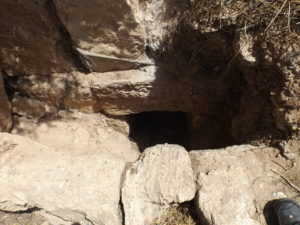 We’re thinking that the Byzantine church was in the center of the city we were surveying. About a mile south is a tower foundation that they determine must be the edge of the city, and just outside the city limit was a tomb. The first morning we were there, Oren took us down to look at the tomb. It was Salome’s tomb. In the Bible, Salome is the mother of the disciples James and John. She was buried in this tomb. We saw where they would have laid her body and where they would have prepared it. This tomb had been scanned with LiDAR by previous teams, so we didn’t perform any new survey in this location.
We’re thinking that the Byzantine church was in the center of the city we were surveying. About a mile south is a tower foundation that they determine must be the edge of the city, and just outside the city limit was a tomb. The first morning we were there, Oren took us down to look at the tomb. It was Salome’s tomb. In the Bible, Salome is the mother of the disciples James and John. She was buried in this tomb. We saw where they would have laid her body and where they would have prepared it. This tomb had been scanned with LiDAR by previous teams, so we didn’t perform any new survey in this location.
The Quarry
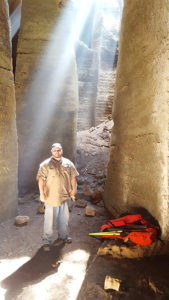 The team was doing LiDAR scans in two places. The biggest LiDAR scan we did was in, for lack of a better term, a quarry. We had to climb down a 20-foot ladder into a small chamber, then crawl through a small hole inside this chamber to get into the quarry. Once we got through this hole, there were stairs that wound along the side of the wall all the way down to the floor of the quarry. You could tell that the stairs were cut—it was a quarry and they were using the rocks to build everything above ground. We were scanning this quarry and the stairs going down. There were seven big columns in the center of this quarry holding the ceiling up. It was massive. This thing was huge. We measured it from the very bottom floor to the top, and it was 67 feet.
The team was doing LiDAR scans in two places. The biggest LiDAR scan we did was in, for lack of a better term, a quarry. We had to climb down a 20-foot ladder into a small chamber, then crawl through a small hole inside this chamber to get into the quarry. Once we got through this hole, there were stairs that wound along the side of the wall all the way down to the floor of the quarry. You could tell that the stairs were cut—it was a quarry and they were using the rocks to build everything above ground. We were scanning this quarry and the stairs going down. There were seven big columns in the center of this quarry holding the ceiling up. It was massive. This thing was huge. We measured it from the very bottom floor to the top, and it was 67 feet.
Inside the quarry was really musty. You could almost taste the air—it was humid and smelly. At one point, I was down there for about 4 hours while we were doing the scanning and drone flights, and I had to go up to the top for some fresh air. After I got home from Israel, I had a cough that wouldn’t go away, and I think it was because of the colder, musty air mixed with the hot dry air outside our work areas. I don’t envy the guys who had to dig out this quarry.
The Condo
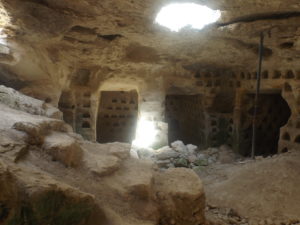 The other area where we performed LiDAR scanning was up above a “theater room,” called the condo. I don’t know if it got its name from a big columbarium in there, where doves would sleep. A columbarium is where there are a bunch of triangles cut into the wall, and doves would go in there. There were probably tens of thousands of triangles throughout all of Beit Lehi. They would use the doves for different reasons. One, you could eat doves. Two, doves lay eggs and you could sell the eggs. Three, dove droppings make fertilizer. And four, it was a cheap sacrifice. In the Old Testament you had to have two blood sacrifices, and doves were cheaper than goats or other animals. That’s why they built these columbariums to keep doves inside.
The other area where we performed LiDAR scanning was up above a “theater room,” called the condo. I don’t know if it got its name from a big columbarium in there, where doves would sleep. A columbarium is where there are a bunch of triangles cut into the wall, and doves would go in there. There were probably tens of thousands of triangles throughout all of Beit Lehi. They would use the doves for different reasons. One, you could eat doves. Two, doves lay eggs and you could sell the eggs. Three, dove droppings make fertilizer. And four, it was a cheap sacrifice. In the Old Testament you had to have two blood sacrifices, and doves were cheaper than goats or other animals. That’s why they built these columbariums to keep doves inside.
After 2,000 Years
Something that happened while we were out there was that we were looking for this cavern to survey in, and Oren told us to wait in the vehicles while he walked around looking for the cavern above us. He hiked up to this really tall hill and we watched him walk around for about 10 minutes, and then he got really excited and yelled at us to come up and join him. It was a steep hike, and once we got up there we saw the foundation for what would have been another tower, just like the one above Salome’s tomb. These towers were built for strategic military purposes where you could see from one tower to the next, to the next and so on.
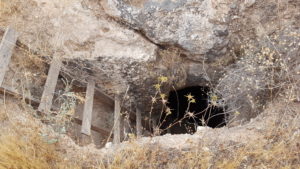 Then we began walking along this path and we began noticing small stacks of rocks next to us. It turned out we were walking on a road that was 2,000 years old, and the rocks were delineating the path of the road. We could see other old roadways on the adjacent hill across the “wadi” [valley] to the west, too. It’s weird to think that we were walking on a road that people 2,000 years ago were walking on. That’s how old this road was.
Then we began walking along this path and we began noticing small stacks of rocks next to us. It turned out we were walking on a road that was 2,000 years old, and the rocks were delineating the path of the road. We could see other old roadways on the adjacent hill across the “wadi” [valley] to the west, too. It’s weird to think that we were walking on a road that people 2,000 years ago were walking on. That’s how old this road was.
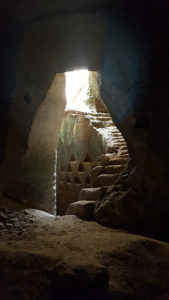 After we had been walking for a while, in this same area, we saw this hole in the ground with a ladder, and Oren got really excited. Of course we went down it, and underground there was a large chamber with a tunnel in one wall. There were smaller tunnels that branched off of it, but if you followed the main tunnel for about 200 yards, you came into this huge room. Huge. It sort of looked like another quarry, but it had more of a theater type feel. Like a place people would gather for celebrations and such. We were the first people to be in this room after almost 2,000 years.
After we had been walking for a while, in this same area, we saw this hole in the ground with a ladder, and Oren got really excited. Of course we went down it, and underground there was a large chamber with a tunnel in one wall. There were smaller tunnels that branched off of it, but if you followed the main tunnel for about 200 yards, you came into this huge room. Huge. It sort of looked like another quarry, but it had more of a theater type feel. Like a place people would gather for celebrations and such. We were the first people to be in this room after almost 2,000 years.
The Sabbath
I survey all the time. You would think that I would take something from the surveying aspect, because I’m a surveyor and that’s what we do. To me, being on the site was really cool and seeing this archaeological dig was really neat. Honestly, that wasn’t what I took away from it. What I took away from it was the outside experience—it was more of a personal experience. What I took out of it was the love for the people and their land.
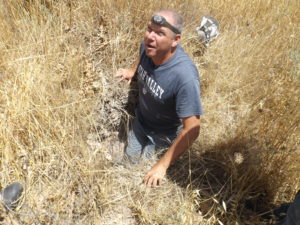 Oren is Jewish, and we went to his house to partake of his “Shabbat” [Sabbath] dinner. He sang and read prayers and I really, really enjoyed this night. I would say I enjoyed that night more than anything I did on the survey site. As we gathered together, taking pictures and saying goodbye for the night, I told Oren and his wife “Toda” (thank you in Hebrew), to which he smiled and replied “Bevakasha.”
Oren is Jewish, and we went to his house to partake of his “Shabbat” [Sabbath] dinner. He sang and read prayers and I really, really enjoyed this night. I would say I enjoyed that night more than anything I did on the survey site. As we gathered together, taking pictures and saying goodbye for the night, I told Oren and his wife “Toda” (thank you in Hebrew), to which he smiled and replied “Bevakasha.”
By the time I left Israel, I felt something inside of me was now a part of the Israel culture in some way. No matter how little that way is, I will always yearn to go back to the land I enjoyed for those two weeks.